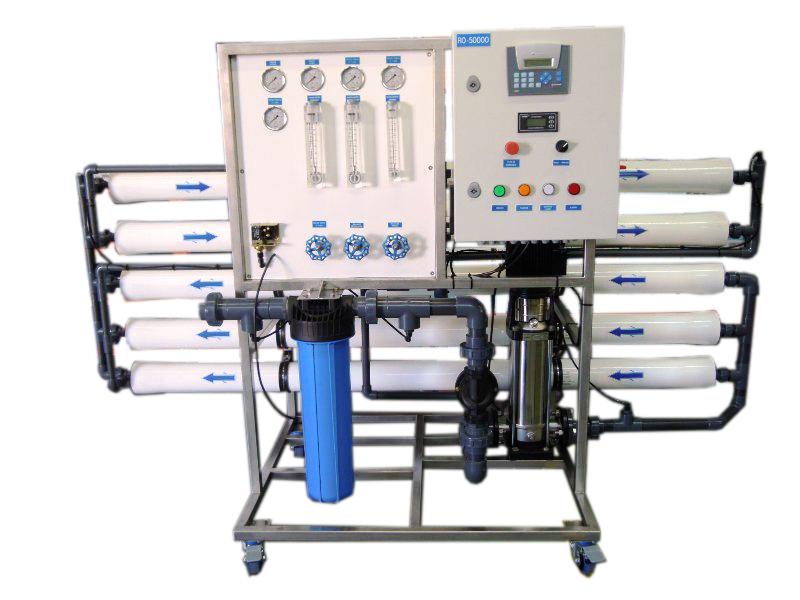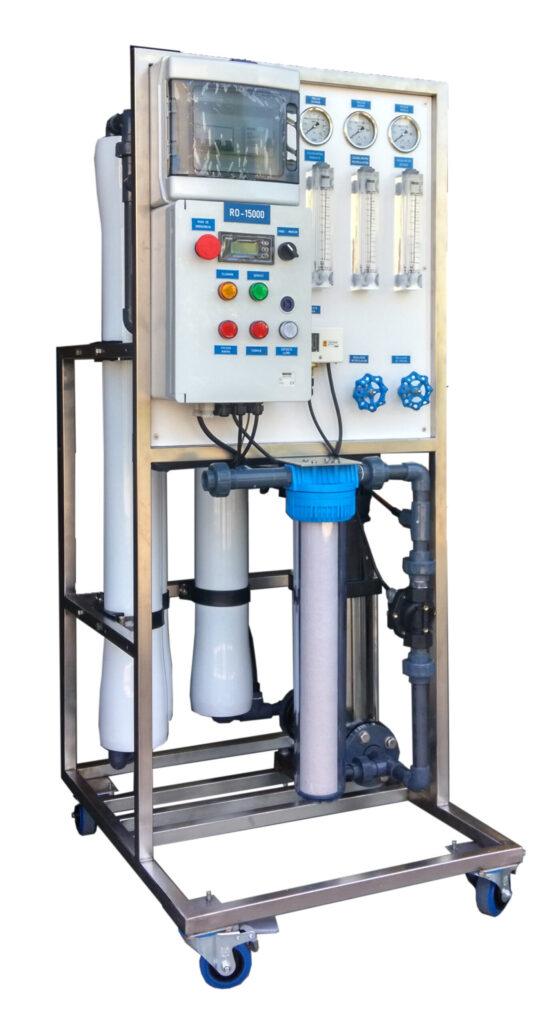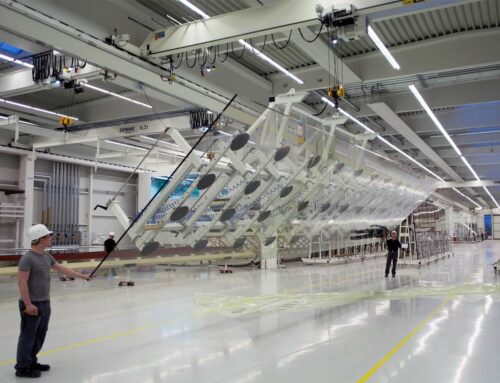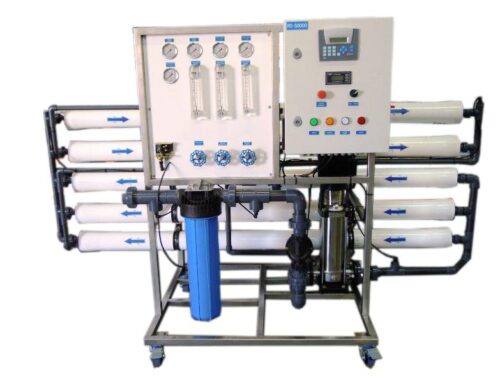What is Reverse Osmosis & how does a Reverse Osmosis System work?

What is Reverse Osmosis? How does a Reverse Osmosis System work?
Reverse Osmosis (RO) is a water purification technology that uses semi-permeable membranes to remove ions, molecules and particles from water.
In a Reverse Osmosis System, water is forced through the membrane, leaving contaminants behind and producing clean, purified water.
A Brief Summary
Reverse osmosis involves applying pressure to water on one side of the membrane and forcing it through its small pores. In a Reverse Osmosis System, the membrane only allows for water molecules to pass through it. This means that it is filtering out impurities such as salts, minerals, and other contaminants. In a Reverse Osmosis System, the purified water is collected and stored on the other side of the membrane. Conversely, the concentrated impurities are flushed away by the Reverse Osmosis System or recirculated through the ringmain to be reprocessed.
Reverse Osmosis Systems are used for both domestic and commercial water filtration, across a wide range of industries. Presently, Reverse Osmosis Systems can remove up to 99% of dissolved solids, bacteria, viruses, and other impurities from water. Undoubtedly, Reverse Osmosis Systems provide a reliable and effective method of water purification.
Technical Overview
In a Reverse Osmosis System applied pressure is used to overcome osmotic pressure, a colligative property, that is driven by chemical potential differences of the solvent, a thermodynamic parameter.
Reverse Osmosis removes dissolved and suspended solids from water, including bacteria. It is used in both industrial processes and the purification of potable water.
The solute is retained on the pressurized side of the membrane and the pure solvent can pass through. The membrane prevents large molecules or ions passing through the pores. However, the membrane allows smaller components of the solution (such as solvent molecules) to pass freely.
In the normal osmosis process, the solvent naturally moves from an area of low solute concentration (high water potential), through a membrane, to an area of high solute concentration (low water potential).
The driving force for the movement of the solvent is the reduction in the free energy of the system. This occurs when the difference in solvent concentration on either side of a membrane is reduced. By doing this, we generate osmotic pressure due to the solvent moving into the more concentrated solution.
Applying an external pressure to reverse the natural flow of pure solvent, it is known as, reverse osmosis.
Because reverse osmosis also involves diffusion it makes the process dependent on pressure, flow rate, and other conditions. The primary functions of a complete Reverse Osmosis System use high pressure pumps in a closed-circuit ring main.
Safe Storage for Purified Water
After the reverse osmosis process, purified water is typically stored in a dedicated storage tank or container. Storage tanks are purpose built. They tend to be made of plastic, stainless steel, or other materials that are compatible with water. This prevents the contamination of the purified water.
Storage tank are typically located near the reverse osmosis system, connected to the system through a tubing or piping system. Storage tanks are usually equipped with a float valve or a pressure switch. This controls the level of water in the tank and turns off the water supply when the tank is full.
To ensure the purity of the stored water, the storage tank is typically sanitised periodically. Chemical disinfectants or other appropriate methods are used to ensure the tank is sanitised. Additionally, tanks are usually equipped with a vent or an air gap to prevent backflow or contamination from the environment.
When the purified water is needed, it is typically drawn from the storage tank through a separate dedicated outlet. The water is usually further treated or filtered, if necessary, before it is consumed or used for other purposes.#

Typical end use applications for Purified Water
Reverse Osmosis Systems are commonly used across a wide range of industries with varying end use applications. Evidently, purified water has a wide range of uses, including:
- Medical: Used in medical facilities for surgeries, dialysis, and other medical procedures.
- Laboratory: Used in laboratory testing and experiments to avoid impurities interfering with the results.
- Manufacturing: Used in the manufacturing of various products, including cosmetics, food, and pharmaceuticals.
- Building Services: Used for keeping steam boilers and equipment running efficiently, by reducing blowdowns.
- Cleaning: Used in cleaning applications such as cleaning electronic components, windows, and other sensitive surfaces that special care.
- Humidifiers: Used to prevent the build-up of mineral deposits, which can damage the machinery. Also prevents the release of harmful minerals into the air space.
- Aquariums: Used for aquariums and fish tanks as it does not contain any harmful chemicals or bacteria. This protects the fish and other aquatic animals from harm.
- Drinking: Used for drinking with a remineralisation filter. Is free of contaminants such as bacteria, viruses, and pollutants.
- Cooking: Used for cooking to prevent impurities affecting the taste or quality of the food.
Overall, purified water is a versatile and essential resource. It has a wide range of uses in various industries.
In conclusion, reverse osmosis is most known for its use in water purification. Reverse Osmosis Systems aid in reducing the conductivity levels in the water and can provide a very high grade of water purity
Find Out More
Puretech Water Systems (UK) Ltd specialise in water treatment and process filtration. We work across multiple sectors providing water processing solutions.
Similarly, desalination is an artificial process which removes the salt and other effluent materials from the water molecules of seawater. Desalination utilises reverse osmosis technologies.
Interested in finding out more about the desalination services we provide?
Find more information here: https://puretechsystems.co.uk/desalination/
More Articles
- All
- News




